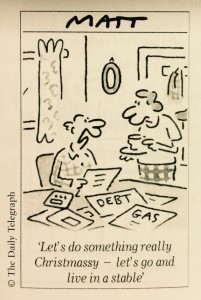
“The Parrot’s Theorem” (translated from “Le Théorème du Perroquet”) was an instant bestseller in France when it was published in 1998.
Sylvia Nasar’s A Beautiful Mind and G. H. Hardy’s A Mathematician Apology are two nonfiction mathematical classics for both mathematicians and mathematics educators. Lesser known are the mathematical novels which often feature characters whose speciality is number theory, also known as higher arithmetic, and elevated as math’s purest abstract branch.
Mathematics à la Tom Clancy
Two novels that revolve around famous unsolved problems in mathematics are Philibert Schogt’s The Wild Numbers and Apostolis Doxiadis’s Uncle Petros & Goldbach’s Conjecture.
If you’re looking for math, women, sex, and back-stabbing, The Wild Numbers is a math melodrama unlikely to disappoint.

Winner of the New South Wales Premier’s Prize
Fictional math
Who are these mathematical fiction books targeted? Math and science teachers? Educated laypersons? Pure mathematicians may like to read them, yet at the same time they may complain that the mathematics discussed in these books is anything but rigorous.
These books seldom fail to convey the following subtle messages:
• The thin line between mathematical genius and madness.
• The search for mathematical truth at all costs, and the heavy price of finding it.
• The arrogance and pride of pure mathematicians who look down on their peers, most of whom work as applied mathematicians and research scientists.
• The relatively high divorce rate among first-rate mathematicians as compared to their peers in other disciplines.
• Mathematics is apparently a young’s man game; one has past one’s prime if one hasn’t written one’s best paper by the age of 40.
• Mathematicians are from Mars; math educators are from Venus.
• Pure mathematicians (or number theorists) are first-rate mathematicians; applied mathematicians are second- or third-rate mathematicians. To the left of the “mathematical intelligence” bell curve are math educators from schools of education, and high-school math teachers.

“Reality Conditions” is collection of 16 short stories, which is ideal for leisure reading—it’s suitable for promoting quantitative literacy, or it’d serve as the basis for a creative course on “Mathematics in Fiction.”
The joy of reading mathematics
Let’s rekindle the joy of appreciating mathematics for mathematics’s sake. Let’s welcome poetry, design thinking, and creativity, whatever ingredient that may help to draw the community into recognizing and appreciating the language of science and of technology. These “pure-math-for-poets” titles have a place in our mathematics curriculum, as they could help promote the humanistic element of mathematics.
Here are ten titles you may wish to introduce to your students, as part of a mathematics appreciation or enrichment course.
The New York Times Book of Mathematics
The Best Writing on Mathematics 2010
Clifton Fadiman’s Fantasia Mathematica
Clifton Fadiman’s The Mathematical Magpie
Don DeLillo’s Ratner’s Star
Edwin A. Abbott’s Flatland
Hiroshi Yuki’s Math Girls
John Green’s An Abundance of Katherines
Philip J. Davis’s The Thread: A Mathematical Yarn
Thomas Pynchon’s Gravity’s Rainbow

Juvenile fiction—A child prodigy and his friend tried to create a mathematical formula to explain his love relationships.
References
Green, J. (2006). An abundance of Katherines. New York: Dutton Books.
Guedj, D. (2000). The parrot’s theorem. London: Orion Books Ltd.
Kolata, G. & Hoffman, P. (eds.) (2013). The New York Times book of mathematics: More than 100 years of writing by the numbers. New York: Sterling.
Hiroshi, Y. (2011). Math girls. Austin, Texas: Bento Books.
Pitici, M. (ed.) (2011). The best writing on mathematics 2010. Princeton, New Jersey: Princeton University Press.
Wallace, D. F. (2012). Both flesh and not: Essays. New York: Little, Brown and Company.
Woolfe, S. (1996). Leaning towards infinity: A novel. NSW, Australia: Random House Australia Pty Ltd.
© Yan Kow Cheong, September 12, 2013.

Murderous math that doesn’t kill!















































 © Sidney Harris There is nothing new under the mathematical sun!
© Sidney Harris There is nothing new under the mathematical sun! 











